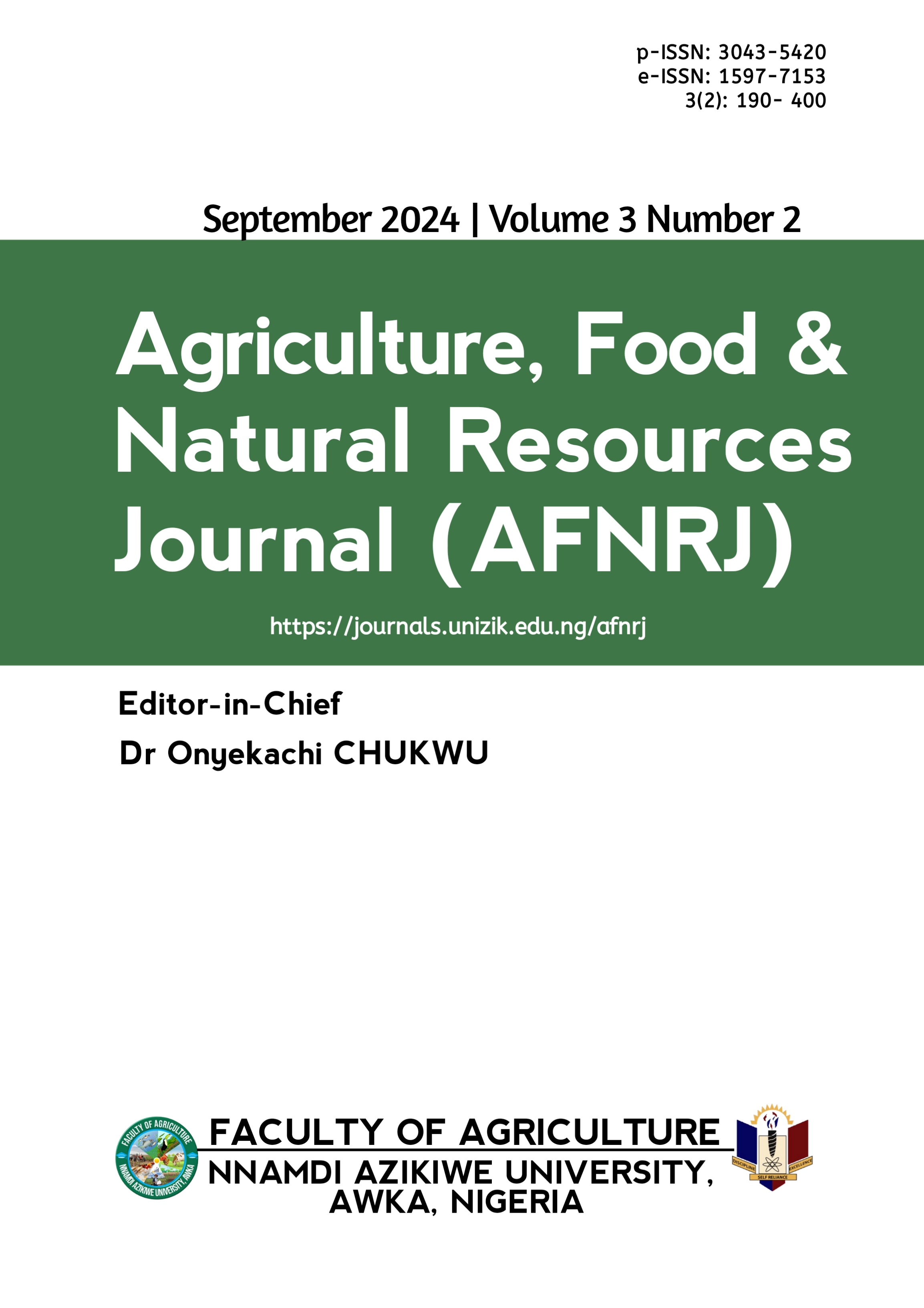Benefit-cost implications of catfish production in Ibeno metropolis, Akwa Ibom State, Nigeria
DOI:
https://doi.org/10.5281/zenodo.14299802Keywords:
Aquaculture, Catfish, Net farm income, Production, ReturnsAbstract
The study investigated the benefit-cost implications of aquaculture catfish production in Ibeno metropolis, Akwa Ibom State, Nigeria. The study specifically described the socioeconomic characteristics of the respondents, estimated the cost and return in aquaculture catfish production, computed the benefit-cost implications of aquaculture catfish production, and evaluated the factors influencing the net income of aquaculture catfish producers. A multistage sampling procedure was used to select 105 catfish farmers. Primary data were collected using questionnaires that were administered using an interview schedule. Data were presented with descriptive statistics and analyzed using budgetary technique and multiple regression analysis. Results showed that 63.8 % of the farmers were between 36-45 years with mean age of 47 years. The majority (61%) had post-secondary education while 49.5% had about 8 years of farming experience. The net income realized from 5 ponds stocked with about 1000 fingerlings for 2 cycles per year was N6,114,333, while the benefit-cost ratio was 1.98, indicating the viability of the catfish business. The major factors that influence net income were the quantity of fish sold, experience of fish farmers, education, and age. Therefore, it is recommended that more support for investment in catfish businesses be encouraged by state governments and other agencies for job creation, food security, and poverty reduction.
Downloads
Published
Issue
Section
License
Copyright (c) 2024 Samuel Preye JIMMY, Julius Emeka OMEJE, Mary Ekere AKPENKONG

This work is licensed under a Creative Commons Attribution 4.0 International License.
which permits unrestricted use, distribution, and reproduction in any medium, provided the original author and source are credited.
Authors retain the copyright of their published work in the AFNRJ.





